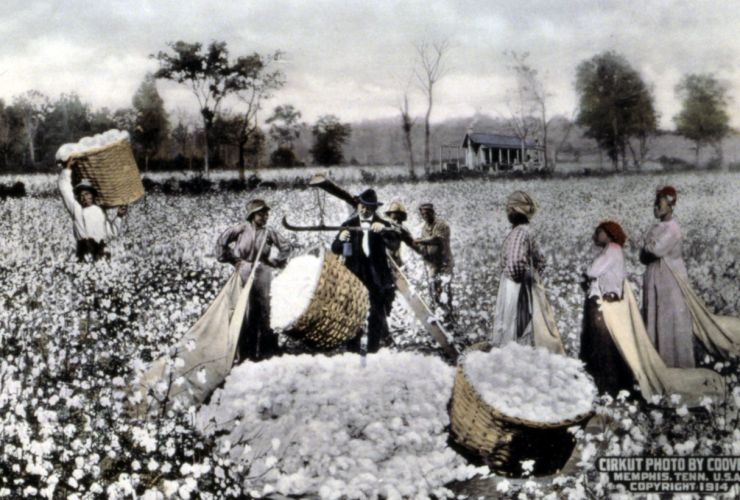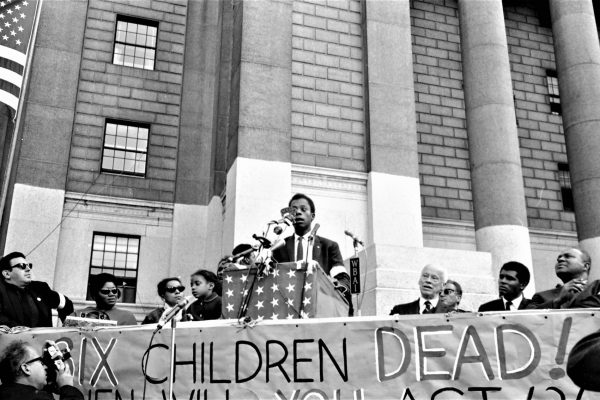It has been worse. Let’s not forget “The Nadir,” as the historian Rayford Logan coined it: the period following Reconstruction in which America witnessed the resurgence and bloody normalization of White Power politics. Between the 1870s and the turn of the twentieth century, southern whites took over the political and propaganda apparatus in all eleven states of the former Confederacy. They rewrote state constitutions with the explicit aim of disfranchising black voters. Racial terrorism, once held underground by the presence of federal troops, morphed into pogroms and spectacle lynchings carried out in broad daylight. Under piercing cries that “The South Will Rise Again,” whites, sometimes by the hundreds and even thousands, attacked African Americans and their property. By some estimates, whites killed as many as half a million black people in politically motivated murders. These efforts were so terrifyingly effective that, over just one decade in Louisiana, white officials and vigilantes slashed the number of black registered voters from 130,000 to some 1,300—a decrease of 99 percent.
The Nadir coincided with the Gilded Age, and not by coincidence—a point Walter Johnson makes very clearly in his analysis of racial capitalism. As once-conquered Confederates snatched black people’s legal protections, the courts and Congress elevated corporations to their current status as rights-bearing citizens. In their efforts to secure even modest concessions from capital, white workers abandoned and turned on black comrades, splintering interracial labor movements. “There began to rise in America in 1876,” W. E. B. Du Bois remarked ruefully in Black Reconstruction (1935), “a new capitalism and a new enslavement of labor,” one that bridled “white, yellow, brown and black labor.” Then, as now, capitalism’s malcontents, with their many colors, suffered a shared predicament. Fractured, “a living working class” transferred its “political power from the hands of labor to the hands of capital, where,” Du Bois explained, “it has been concentrated ever since.” In light of the ensuing imperialism, death, and evaporating livelihoods, the professor maintained, “God wept.”
With the presidency of Donald Trump we can expect a Second Nadir. As was true during the first, white capital firmly holds the levers of both politics and propaganda. And if we expect to have any chance at all to prevent the losses of life and rights that white supremacy inevitably exacts, we are going to have to marshal a little Jim Crow wisdom—knowledge carried through and beyond the Nadir—about how racism got us into this mess.
The first lesson: we should expect steps back before we move forward. Liberal politicians will compromise with white supremacist, nativist, and chauvinist elements, this time in the Republican Party, further building inequality into the political system. The precedent is clear. In the forty years that followed mass black disfranchisement in the South, the best African Americans could hope for was the federalization of Jim Crow segregation. President Woodrow Wilson, a supposed reformer, expelled and demoted African Americans across the federal bureaucracy. From their safe congressional seats and with the power of the filibuster, southern congressmen and senators ensured that labor, housing, education, and hate crime legislation all favored southern designs, which included increased federal investment in sectors already controlled by capital—say, cotton cultivation—and minimal tampering with race regulations codifying Jim Crow.
The subsequent New Deal salvaged the American economy, in part by creating for mostly white employers, landlords, bankers, and developers a series of very profitable racial niche markets. Blocked from joining unions, blacks and agricultural workers, for instance, sold their labor for next to nothing, further protecting white wealth. Tenants in both rural and urban enclaves around the country—white and black—suffered gouging so dramatic that landlords could easily fetch annual returns of 25–60 percent on their rental investments. (Typical returns in white markets today stand at 4–6 percent.) These policies and others also set in motion another several decades of structured racial inequality as confined African American communities became sites of pointed, predatory taxation by white-controlled local governments and predatory pricing for durable goods, services, and housing.
Second lesson: in light of racist structures, we should not expect solidarity as the default response from subaltern people. In order to break out of Jim Crow regulations, many Americans elected to distance themselves from African Americans neighborhoods—sometimes violently—or simply denied, in spite of their African descent, being black altogether. In the century following the Nadir, people of all colors hungrily sought out political whiteness, either by passing for white or by pursuing legal or diplomatic exemptions from being “colored.”
We should understand, though, that passing in the twenty-first century will not be of the kind depicted in black-and-white movies, for after the Second Reconstruction the meaning of whiteness changed. Everyone who could was suddenly in a hurry to disown it. Following the passage of the Civil Rights Act and the moral challenges of the broader black, brown, and red freedom struggles, scores of Americans bolted from whiteness looking to identify with any variation of “— American.” Work by Matthew Frye Jacobsen, Nancy MacLean, Jared Sexton, and others explores how the hyphenated identities we now take as a given—and their “mixed race,” “neither-black-nor-white” variants—emerged in the wake of Title vii of the Civil Rights Act. Affirmative action, new employment, and educational benefits were extended to those who could claim practically any association at all with the history of racial or ethnic discrimination in America. New forms of institutional multiculturalism in the 1960s and early 1970s distributed widely the government’s obligation to redress historical wrongs. In place of so-called “Negro” benefits that could break down the vestiges of Jim Crow, practically everyone, in the eyes of the state, got to be some kind of minority.
This brings me to the third lesson: multiculturalism will not save us. Multiculturalism, as an alternative to mandated desegregation, is actually a southern—or, rather, segregationist—value, steeped in the elective traditions of southern liberalism. These include, in the Jeffersonian tradition, strict racial regulation and laissez-faire economics (the latter for whites only). Rather than mandated fair employment measures, decried by Jim Crow politicians as “autocratic” and “tyrannical,” the country got affirmative action, a program that allows employers to cultivate their own multiculturalism relative to their own perceived market demands. Opposing the Court’s decision in Brown v. Board of Education in 1954, Zora Neale Hurston argued against mandated integration with calls, instead, for “growth from within” and “ethical and cultural desegregation.” This was a vision of culture over policy. Blacks and whites, her argument went, could come to understand each other on their own terms, not on terms set in some far-off bureaucracy in Washington.
As the 1960s became the 1970s—in battles over everything from school busing to anti-poverty measures—volunteerism and conflations of inequality with culture began to replace mandated desegregation efforts and an institutional acknowledgement of history. Indeed, white supremacy stays alive in American institutions through the pointed erasure of historical thinking, which is necessarily race thinking. The Supreme Court removed historical consciousness from college admissions policy in 1978 with its decision in Regents of the University of California v. Bakke; admissions committees could no longer consider past, group-based discrimination when determining individuals’ present-day access to college. As Thurgood Marshall explained in his dissent, “It is more than a little ironic that, after several hundred years of class-based discrimination against Negroes, the Court is unwilling to hold that a class-based remedy for that discrimination is permissible.” In its willful ahistoricism, the Court’s rulings in Bakke and subsequent cases, including Grutter v. Bollinger (2003) and Fisher v. University of Texas (2013), have effectively affirmed a “diversity regime” that knows how to celebrate difference without exploring how that difference got produced, imposed, and preserved. The Court likewise removed historical consciousness from its federal voting rights protection in 2013 with Shelby County v. Holder, which ensured that states with a past record of racial discrimination no longer needed the presence of federal registrars at the polls. Representing what one observer viewed as the end of the Second Reconstruction, the Shelby decision opened the door for voter suppression in North Carolina and Florida in the 2016 election.
Contextualizing multiculturalism as one among many rejections of subaltern history thus reveals it to be, in large measure, just one more example of institutions behaving in observance of structural white preferences. The question is not whether to focus on culture, but rather which course of action advances institutional anti-racism as a collective aim.
Today calls to step away from “identity politics” represent implicit calls to step away from civil rights, as Marcus H. Johnson has powerfully argued. Such a move, again, merely represents an extension of older—indeed some of the oldest—segregationist politics. People often forget that Plessy v. Ferguson (1896), perhaps the most critical case in setting the terms for Jim Crow, professed to be a colorblind ruling. According to Justice Henry Billings Brown, segregation was not tantamount to discrimination. “We think the enforced segregation of the races,” the Court said in a twisted logical turn, “neither abridges the privileges or immunities of the colored man, deprives him of his property without due process of the law, nor denies him the equal protection of the laws.” No special treatment for black people, in other words, even as they suffered special indignities. Jim Crow’s foundational ruling effectively stood on an “All Lives Matter” argument.
Now we are being asked to forget about race altogether. Even before Election Day wrapped up one of the most racist political campaigns in recent memory, white observers on the left, center, and right began telling us that what we had just witnessed was not about race. We were supposed to understand the hurting Heartland. Media outlets, reporters, and pundits, nursing their collective shock and groping for credibility, rolled out primitive “class vs. race” formulations. They warned the far left to “be careful with the ‘white supremacy’ label” and suggested that those who pursued “wrong-headed” “identity politics” owed middle America an apology.
But let’s remember why Trump was able to surprise so many. One reason Trump seemed like such a long shot to liberals is that he failed to adhere to the general principles of the New Economy’s dog-whistle race politics. The Second Reconstruction brought with it fundamental revisions in how America’s political mainstream had to handle the race question. President Richard Nixon, mirroring approaches successfully deployed by Democratic mayors in Chicago and elsewhere, was forced to animate his party’s white base not with overt calls to white racists, or even a successful Southern Strategy, but with calls for “law and order,” full-throated defenses of “property rights,” and condemnations of the “welfare ethic.” These terms served as handy ways to target black populations, sometimes violently. Economic and federalist arguments could also be used to great effect. As the Republican strategist Lee Atwater explained in 1981, unaware he was being recorded:
You start out in 1954 by saying, “Nigger, nigger, nigger.” By 1968 you can’t say “nigger”—that hurts you, backfires. So you say stuff like, uh, forced busing, states’ rights, and all that stuff, and you’re getting so abstract. Now, you’re talking about cutting taxes, and all these things you’re talking about are totally economic things and a byproduct of them is, blacks get hurt worse than whites. . . . “We want to cut this,” is much more abstract than even the busing thing, uh, and a hell of a lot more abstract than “Nigger, nigger.” . . . Anyway you look at it, race is going to be on the back burner.
Race on the back burner; economy, small government, and values on the front. The old, southern liberalism nationalized.
For about thirty years, tepid multiculturalism and other “colorblind” deployments of race and difference became the North Star for mainstream American politics. The charted course included civil rights organizations teaming up with corporations in the early 1980s to defend affirmative action against Ronald Reagan. Through the 1990s Bill Clinton’s folksy, symbolic blackness (and the lingering white populism in the gop) helped cement the Democratic Party’s hold on the black vote, especially as it made “colorblind” policy overtures to white voters. In response to the New Democrats, George W. Bush deployed an army of high-level black and brown surrogates and appointees to evidence the gop’s new “compassionate conservatism.” And, of course, Barack Obama’s actual blackness allowed him to openly scold his black base, to deport more than two million immigrants, all with little to no political cost. Following the Second Reconstruction, it seems, racial tolerance in general, and blackness in particular, became not just helpful but necessary for political success in America.
Then came Trump. Here was a man of questionable values, questionable conservative bona fides, and, based on his own checkered record in business, questionable understanding even of economics. Worse, it seemed, he again and again broke the discursive norms that had been greasing the wheels of American capitalism since the passage of the Civil Rights Act. Because Indiana-born judge Gonzalo Curiel was “a Mexican,” Trump deemed him unqualified to adjudicate the Trump University fraud case. Because the nbc debate moderator Lester Holt was black, Trump decided he was a Democrat and thus part of the “phony system” propping up Hillary Clinton. (Holt is, in fact, a Republican.) Trump refused to be bound by the old Atwater playbook, and he won.
So, let’s just tell the story right. Throughout the campaign Trump’s base stood wealthier, not poorer, than the average voter who supported the Democrats. Exit polls showed that Clinton won more than half the votes of people who earn less than $50,000 a year. One-time Obama counties may have gone for Trump, but the mythical white millions who voted for Obama twice and then stomached a vote for Trump do not exist. The problem is rather that the two-time Obama voter—rather than vote for Clinton and, dare one say, pissed at the president himself—elected to stay home, especially if that voter was not college educated.
Which brings me to the final lesson: we need to practice our political consciousness. Class struggle requires a culture that nourishes class consciousness. Without cultural affirmations of feminism, attacks on women will not shock the conscience. The president-elect safely mocked the disabled, African Americans, and Latinos, performing his best in those areas where Americans enjoyed none of the intellectual and cultural infrastructure required to reject his brand of politics. On race specifically, our institutional priorities continue to undermine the formation of a racially literate public. You cannot topple racial injustice, sexism, or class exploitation without race, gender, or class thinking—early, often, and in public. And that requires, in place of mere “diversity,” a restoration of historical thinking.
It also requires new protections of the electoral process. The American political system remains beholden to campaign contributions, corporate lobbying, and the slave masters’ founding document, the Constitution. Every now and again we bend the system, in spite of its reluctance, into some temporarily progressive shape through legal challenges, grassroots community efforts, direct action, armed self-defense, and surreptitious subversions of everyday inhumanities. But remember: even as we try our damnedest (and we must), this will still take a while. It took nearly a century of work to achieve even the basic federal protections promised before the Nadir. Not until the March on Washington in 1963 would the country see another forceful show of solidarity between black civil rights groups and white organized labor. And not until the 1970s would African Americans reach the same number of elected or appointed officials nationwide that they once enjoyed in the South during Reconstruction.
It is uncertain when we will see our Third Reconstruction. I remain confident, though, that we will. We have been here before.
This forum is featured in Race Capitalism Justice, now available in reprint. Order your copy today.








